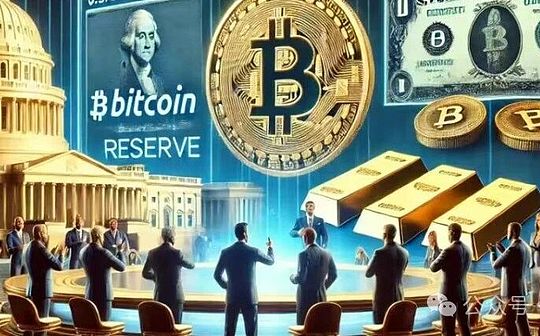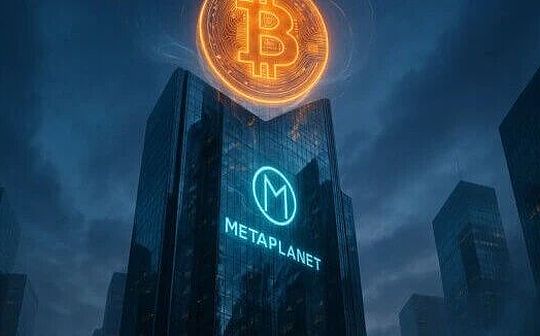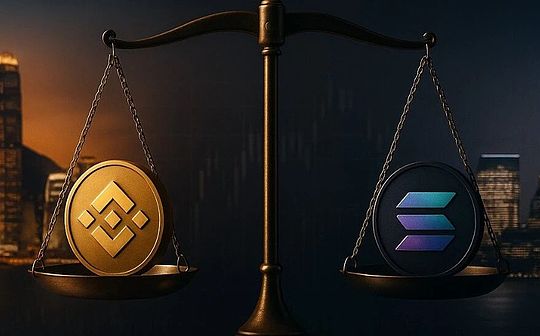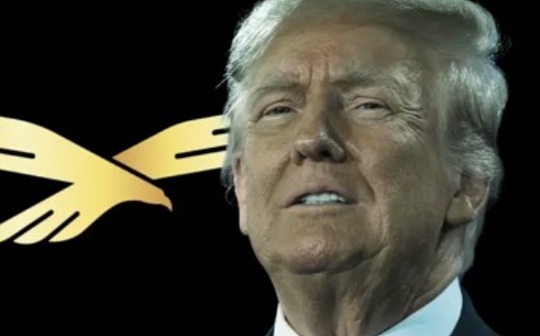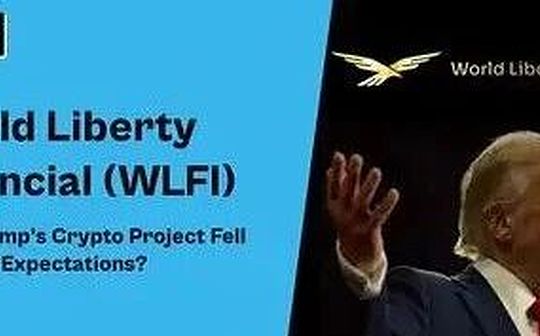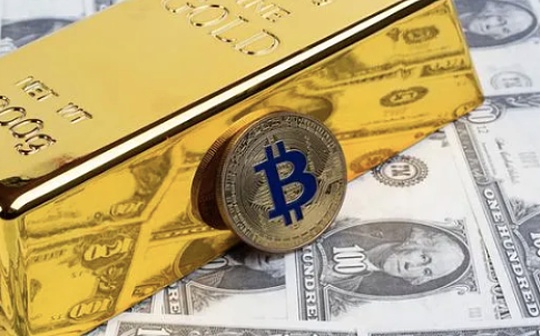
Previous article:Strategic Reserves and Game of Thrones I—The Encrypted Order in the Trump Era
Author: Zeke, researcher at YBB Capital
Preface
On March 6, US President Trump signed an executive order to officially establish the US Bitcoin strategic reserve.David Sachs, director of cryptocurrency affairs at the White House, further clarified the reserve details on social media platform X: about 200,000 bitcoins held by the federal government will be included in this strategic reserve.These assets are confiscated through criminal or civil confiscation procedures and make it clear that “they will not be sold or purchased through the market”.
I am hereIn the article published on March 5Some progress in strategic reserves was speculated.Interestingly, the current situation is very consistent with my predictions at the time.Instead of including altcoins such as SOL or XRP on the reserve list as previously promised, Trump did not inject new fiscal funds into the BTC reserves, but simply transferred all seized bitcoins into the strategic reserves.However, what is surprising is that the speed of reserve implementation is so fast-Trump used this “Ace” without delaying it for long.With the launch of this move, the market’s illusion about government bulk purchases faded, and BTC also fell back to a low of around $77,000.Now, no matter how you look at it, Trump seems to have very few strategic choices left.But what is worth pondering is:Is this really the limit of this “crypto president” who has dominated the business and politics for decades?
1. Gold, oil, and then BTC?
The collapse of the Bretton Woods system, the cracks of the petrodollar, and the rise of Bitcoin all represent the continuous evolution of the US dollar anchor.
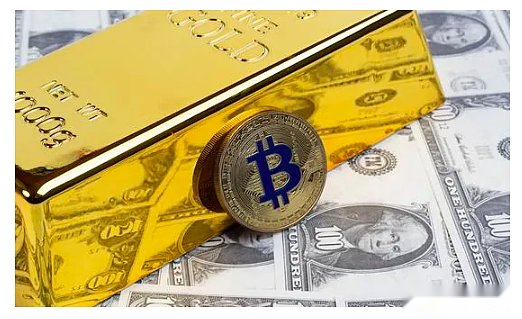
The establishment of the Bretton Woods system in 1944 marked that the US dollar became the “ultimate anchor” of the global monetary system by pegging to gold ($35/ounce).The core logic of this system is that the physical scarcity of gold supports the credit of the US dollar, and the network effect of the US dollar amplifies the liquidity of gold.However, the Triffen puzzle exposes the fatal flaws of the system – global trade expansion requires the dollar outflow (US deficit), while maintaining the dollar’s credit depends on U.S. surplus and adequate gold reserves.In 1971, Nixon announced that the US dollar would be decoupled from gold, freed from the shackles of gold, and maintained the hegemony of the US dollar.This proves that any monetary system that is rigidly linked to physical resources will eventually collapse due to the irreconcilable conflict between resource scarcity and economic expansion..The end of the gold standard forces the United States to seek a more flexible anchor.
The first oil crisis in 1973 gave Nixon the answer: the importance of oil to modern industry is beyond doubt.The following year, U.S. Treasury Secretary William Simon and deputy Gerry Parsky were sent to Saudi Arabia to sign an “irrevocable agreement.”The United States promises to provide military protection and security guarantees to Saudi Arabia on the condition that Saudi Arabia agrees to denominate all oil exports in US dollars and purchase U.S. Treasury bonds with excess oil revenue.The era of petrodollar has begun, and oil replaced gold and became the new anchor of the US dollar’s credit.The petrodollar system operates through the closed-loop operation of “petroleum trade-USD remittance-US debt purchase”.Wall Street packages these petrodollar debts into derivatives (the scale reaches $610 trillion in 2023) to dilute credit risks through “debt monetization”.

The essence of this circular logic is that the United States imposes a “sin tax” on the world through oil trade.But now, with the U.S. fiscal deficit remaining high (the annual deficit accounts for 7% of GDP), Treasury bonds exceeding $36 trillion this year, and this system has become a Ponzi scheme to borrow money to repay debts.As the de-dollarization of oil trade gradually expands, this cycle will inevitably collapse.So what happens next?Who will fill the gap left by oil?
Trump currently holds two powerful cards – Nvidia and Bitcoin.In the AI narrative, Nvidia plays the role of the “Digital Middle East”, and everyone needs computing power, but only I can produce it.Unfortunately, a certain country in the East has adopted a “small and beautiful” approach in terms of AI computing power, so before the era of AI agency is fully arrived, computing power and digital oil are not synonyms (or some countries may be self-sufficient in oil).
Let’s take a lookThe second card: Bitcoin.The idea of Bitcoin as a strategic reserve stems from a proposal made by Senator Lummis to Congress last year, who believes that the purchasing power of the dollar has been declining, and Bitcoin’s annual growth rate is as high as 55%, making it an excellent tool to hedge inflation and a new storage of value alternative to gold.Trump even said, “Give them a little crypto check, give them some bitcoin, and erase all our $35 trillion.”
Whether it’s pegging the dollar to Bitcoin or using it to repay U.S. debt, I’m always against these ideas.The first reasonIt is mentioned above-The collapse of the Bretton Woods system.The hard limit of Bitcoin is 21 million, which is far scarce than gold. It is impossible for the United States to repeat the mistakes of Triffen’s puzzle.Secondly, the volatility is too greatCurrently, there are only 200,000 Bitcoins in reserve, worth less than US$20 billion, which is only 0.056% of US debt.To achieve an effective peg, the United States needs to hold at least 30% of Bitcoin circulation (about 6 million), or significantly increase the value of Bitcoin and stabilize its price—both seem unrealistic.Third, pegging the US dollar to Bitcoin will only accelerate the marginalization of the US dollar.How to convert Bitcoin into a global tax base is another open question.
Judging from the current implementation of strategic reserves, the Trump administration obviously cannot find a better entry point in the short term.But the speed of this card played forced me to rethink: Do they have bigger aces?
My personal thoughts extend from the speculations from the previous article:
1. The scarcity of Bitcoin does not mean that all cryptocurrencies are scarce. Most public chain tokens are designed with a deflation mechanism. The US dollar is currently supported by oil and gold as its face value.The structure of digital Fort Knox may be mixed: BTC is gold, public chain tokens such as ETH or SOL are oil.With the large-scale application of “crypto cities”, can an American-style encrypted closed loop be formed?For example, various stablecoin projects such as Usual and Tether are constantly promoting the so-called US dollar settlement, and their structural mechanisms or sources of profit are closely related to US debt. Is this somewhat similar to the petrodollar system?
2. At this stage, it is reasonable not to buy or sell, but if the final action is limited to this, it is too early to announce this news.Trump is not stupid, nor is his crypto team.There are growing rumors in the industry that the U.S. sovereign wealth fund (which is still in the planning stage) will buy cryptocurrencies.I tend to think that this sovereign wealth fund is likely to be his ace.
3. At first, I thought Trump made an empty promise to the crypto industry just for the benefit of his underlying network.However, given the current situation, we may need to have bigger goals.It is only a matter of time before mainstream countries follow their strategic reserves.Personally, I think BTC is the most acceptable, but SOL and even XRP may outperform ETH (as adoption advances).
4. The largest unit in the crypto war is no longer a public chain.Trump appears to be integrating the largest CEX, public chains and various mega projects, but how he will integrate them is still unclear, how will those who resist fight back?
5. Wall Street rumors Trump is planning a self-destructive recession to force the Fed to lower interest rates.Whenever the market looks like it is expected to improve, Trump and Musk (DOGE) will strike hard.So, is Trump also trying to suppress the crypto market?Turn the highest expectations into bubbles?However, I don’t agree with this.First, the AI bubble in the U.S. stock market is undeniable—and while it cannot be compared with the 2000 Internet bubble, overheating is certain.Secondly, Trump and Musk’s tough measures will inevitably trigger a rebound, and the left-wing counterattack is inevitable.The so-called “recession” is actually the result of the joint efforts of both sides.
Regarding points 1, 3 and 5, I can only speculate at this stage, but for points 2 and 4, I believe I can expand further.
2. Sovereign Wealth Fund
On February 3 this year, Trump signed an executive order requiring the establishment of the US sovereign wealth fund next year, requiring the US Department of Commerce and the Treasury to submit plans within 90 days, including financing mechanisms, investment strategies, financial structures and governance models, aiming to finance infrastructure, supply chains and strategic industries.
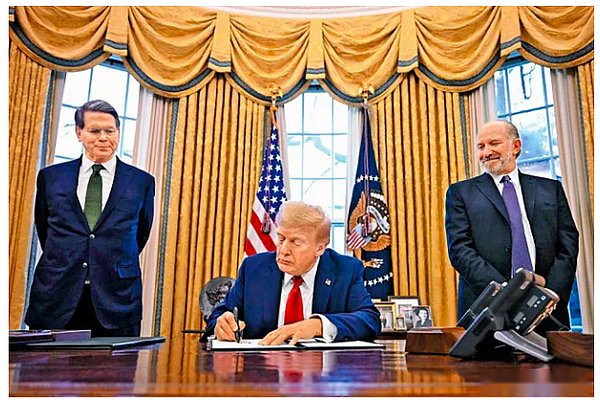
About 50 countries and regions around the world have established sovereign wealth funds, and China’s China Investment Corporation and Huaan Investment rank second and third in the world respectively.The investment style of sovereign funds varies according to national conditions. For example, the Middle East focuses on strategic industries, Norway focuses on stock investment, and China serves private equity, real estate and the Belt and Road Initiative.There are four benefits of establishing a sovereign wealth fund: 1. Smooth economic fluctuations (held resource price risks and optimize foreign exchange reserve management); 2. Promote economic structural transformation (such as the Middle East’s support for tourism and technology); 3. Gain global financial influence; 4. Protect society and build social welfare.
The establishment of the US sovereign wealth fund was mainly driven by the TikTok dispute.Publicly, it is Trump’s acquisition of the Internet company that the American people love, and it is also to solve the fiscal deficit and infrastructure upgrade problems.In private, this is Trump using his business acumen in the White House to escalate his power.If conditions permit, this fund may become the main source of funding for crypto strategic reserves.This is not entirely speculation. Lutnik, the key leader of the fund and nominee of the U.S. Secretary of Commerce, was once the CEO of Cantor Fitzgerald, one of the Tether custodians, and has managed related assets.Plus Lutnik is a supporter of Bitcoin, it is not surprising that he will take charge of the sovereign wealth fund planning – this seems to lay the groundwork for Trump’s crypto family and the interests behind it.In addition, most sovereign funds are registered in offshore financial centers such as the Cayman Islands or Luxembourg, using local laws to circumvent disclosure requirements, thereby enabling behind-the-scenes operations.For example,Saudi Arabia’s Public Investment Fund (PIF) holds 320,000 Bitcoins through offshore shell companies, completely unregulated by sovereign balance sheets.Trump’s regrets during his 2016 term may be fully resolved during this term.
As for the source of funds, there are only four options: earn, sell, borrow, or print.Judging from the current situation in the United States, the most likely ones are the first two options.Trump hopes to fill the fund with tariff revenue or by selling $5.7 trillion in assets currently held by the federal government.Of course, it doesn’t matter which way to build a fund, what matters is the potential size of the ideal fund.If this becomes a reality, the core points are: 1. Government purchases will become the fact; 2. US-centric crypto projects will become the primary (or possibly the only) alpha in the crypto world; 3. Whether top projects accept investments from sovereign funds will determine their survival.
3. Surrender?
This month, Binance made two major moves.First, it partnered with the UAE royal family to receive a $2 billion investment from sovereign wealth fund MGX.Rumors say Binance also had discussions with U.S. officials about investment.The Wall Street Journal even claimed that CZ may have exchanged equity for pardon from the Trump family.Second, Binance Smart Chain (BSC) seamlessly integrates into its own CEX, which means that CEX users can now easily participate in on-chain transactions of BSC using stablecoins.These initiatives highlight the systematic integration of traditional financial and geopolitical forces in the field of crypto.also,Embracing centralization seems to be the only way out for public chains.Encryption is being divided by various countries, and public chains either embrace elites or embed CEX, and their growth and strength depend on the distribution of traffic.
Ethereum, which chose to remain independent, continues to maintain its proud posture, even as its exchange rate with BTC continues to hit new lows.The crypto community’s suspicion about the Ethereum Foundation and Vitalik has been going on for nearly a year.However, from my point of view,Ethereum’s survival—and its potential counterattack—is crucial to the crypto world.Today, there are only two ways: surrender or resist.
Surrenders will share rewards with the elite and enjoy temporary peace.But, if we cut five cities today and ten cities tomorrow, what will happen in the future?The continuous implementation of centralized Web3 will no longer be Web3.In the end, the seven countries will be unified by Qin.EthereumThere may be a weird dictator, but itStill the only public chain worthy of being called a decentralized ecosystem.Yes, even today.I’m not a staunch supporter of Ethereum, but I don’t want to see it become the Handan City of the crypto world.
Ideally,Value should exist in code running on the blockchain, not in a line of signatures on the White House executive order.



